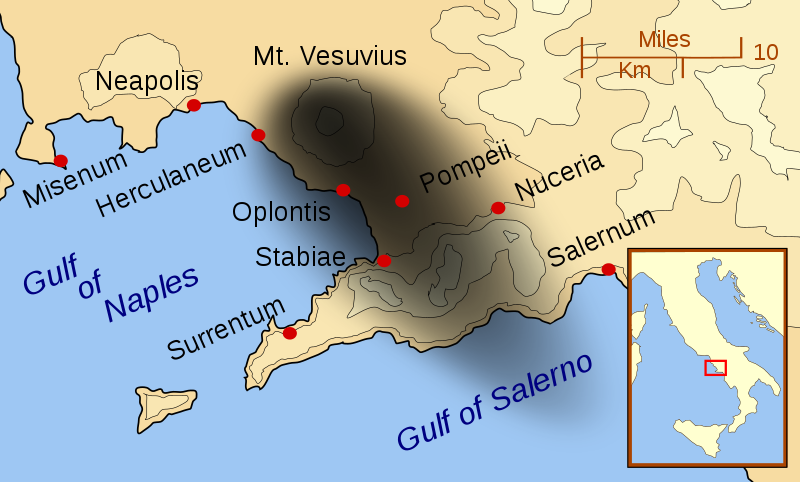The Most Complete Ancient Library We Know Of
November 27 2020
In 79 CE Pompeii wasn’t the only town buried by Vesuvius. The nearby town of Herculaneum, although saved from the initial destruction, also met its end that day.
From a library standpoint, what makes Herculaneum more special than Pompeii is that one of the uncovered buildings, now known as the Villa of the Papyri, contains a library. A library whose scrolls have been carbonized. A whopping 1,800 rolls.
To make things even more amazing, it has been found that the scrolls didn’t just become unreadable. The texts they held? A lot of it is still there, making this the most sizeable ancient library with its contents still (relatively) intact.

^ One of the carbonized papyrus scrolls
Researchers are still learning how to best open the papyri without destroying the inscriptions, but from the fragments already opened they have been able to uncover what was written in the pages.
The Friends of Herculaneum Society has a website on the town, complete with information for if you want to travel to see the different towns that were destroyed by the infamous Vesuvius eruption. Their site also includes a link to an online library of the papyri opened so far - divided by genre, author, and date.
If you’re interested in the event that led to preserving the scrolls, you might also enjoy Pompeii: The Last Day by the BBC. It’s a 2003 recreation of the events based on the then-current knowledge and talks about how the eruption affected Herculaneum and Pompeii differently.
There is also a 2003 documentary by PBS specifically about the library entitled Out of the Ashes: Recovering the Lost Library of Herculaneum that we would recommend.
Image Credits
Map by Wikipedia user MapMaster
Scroll photograph by Paz Estrada, 2016

